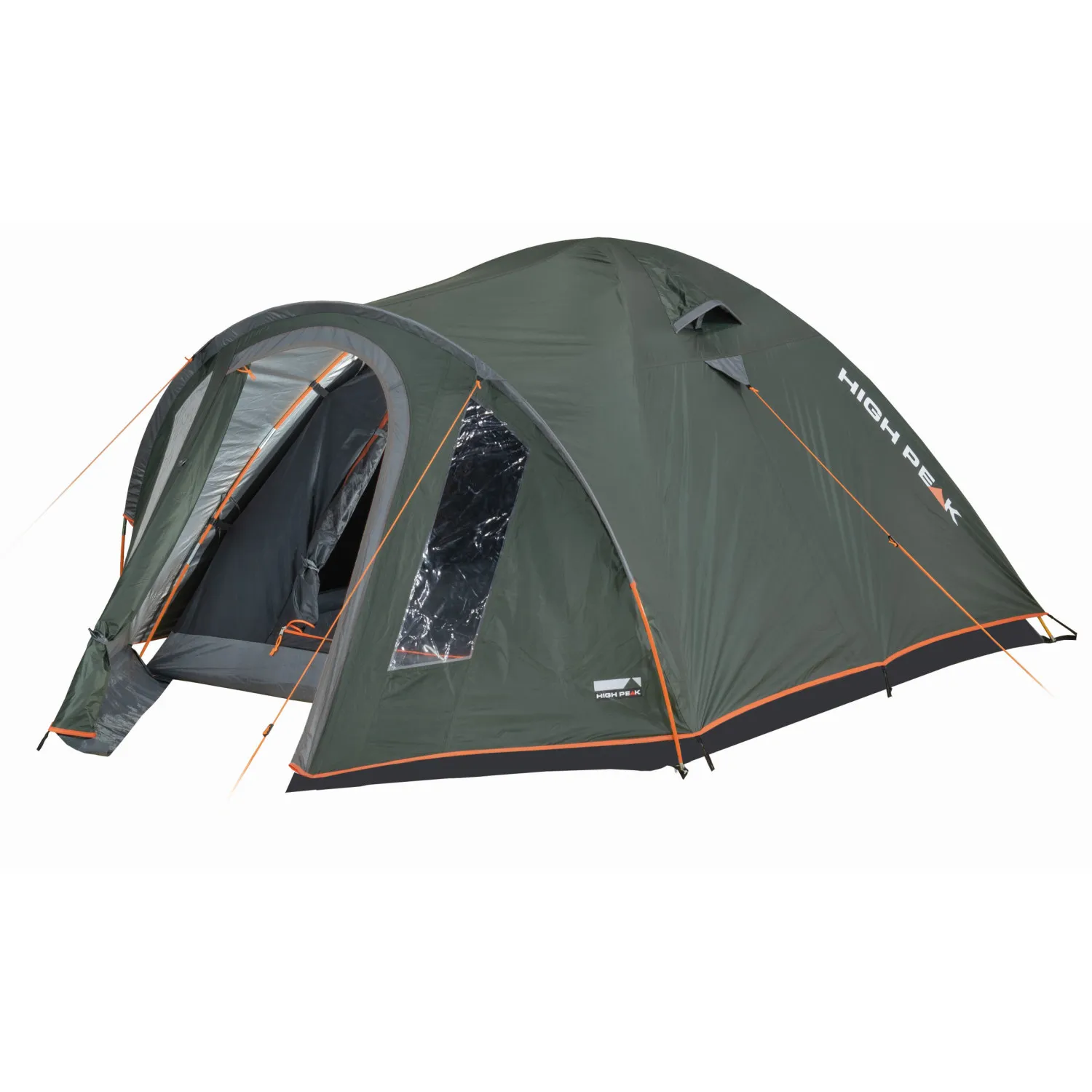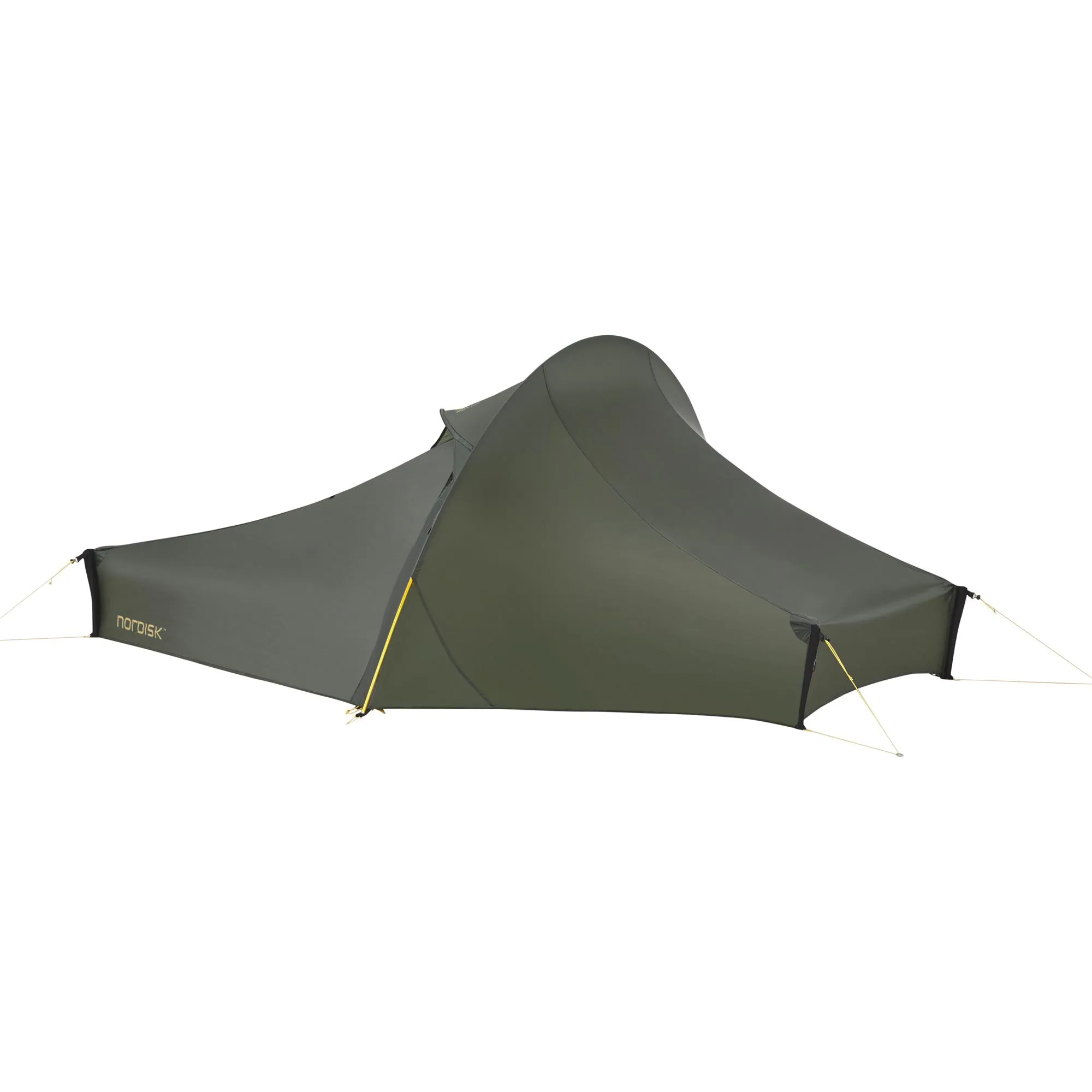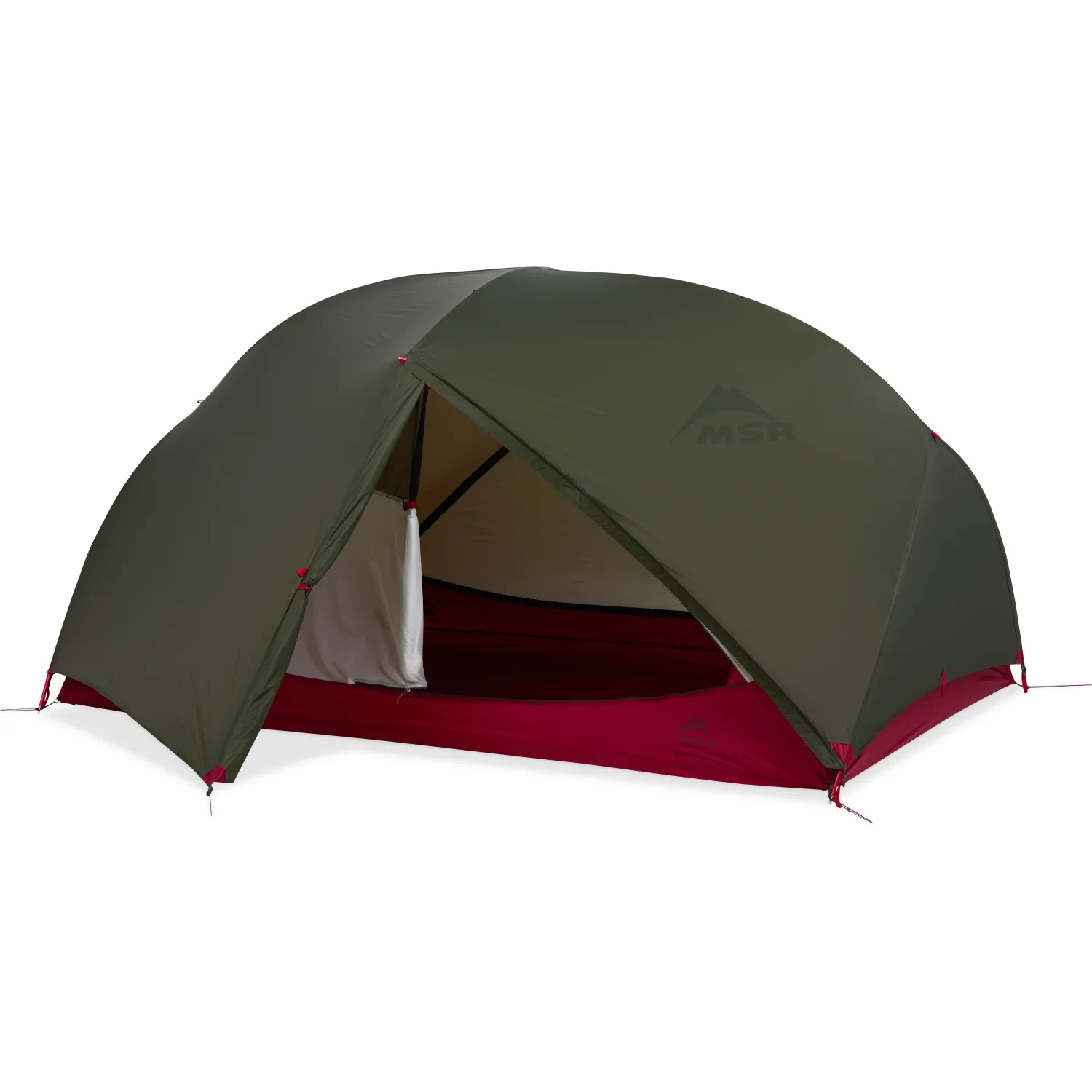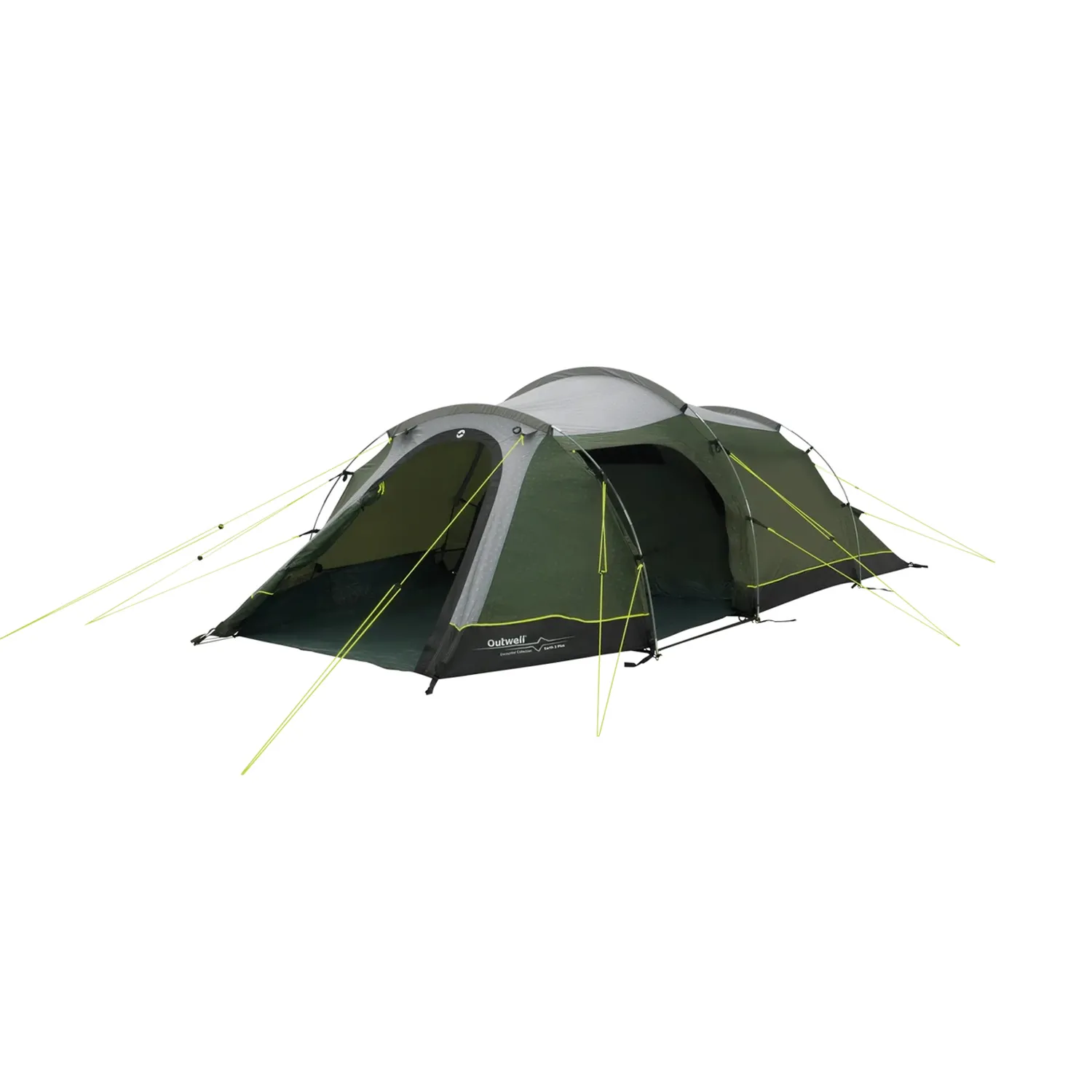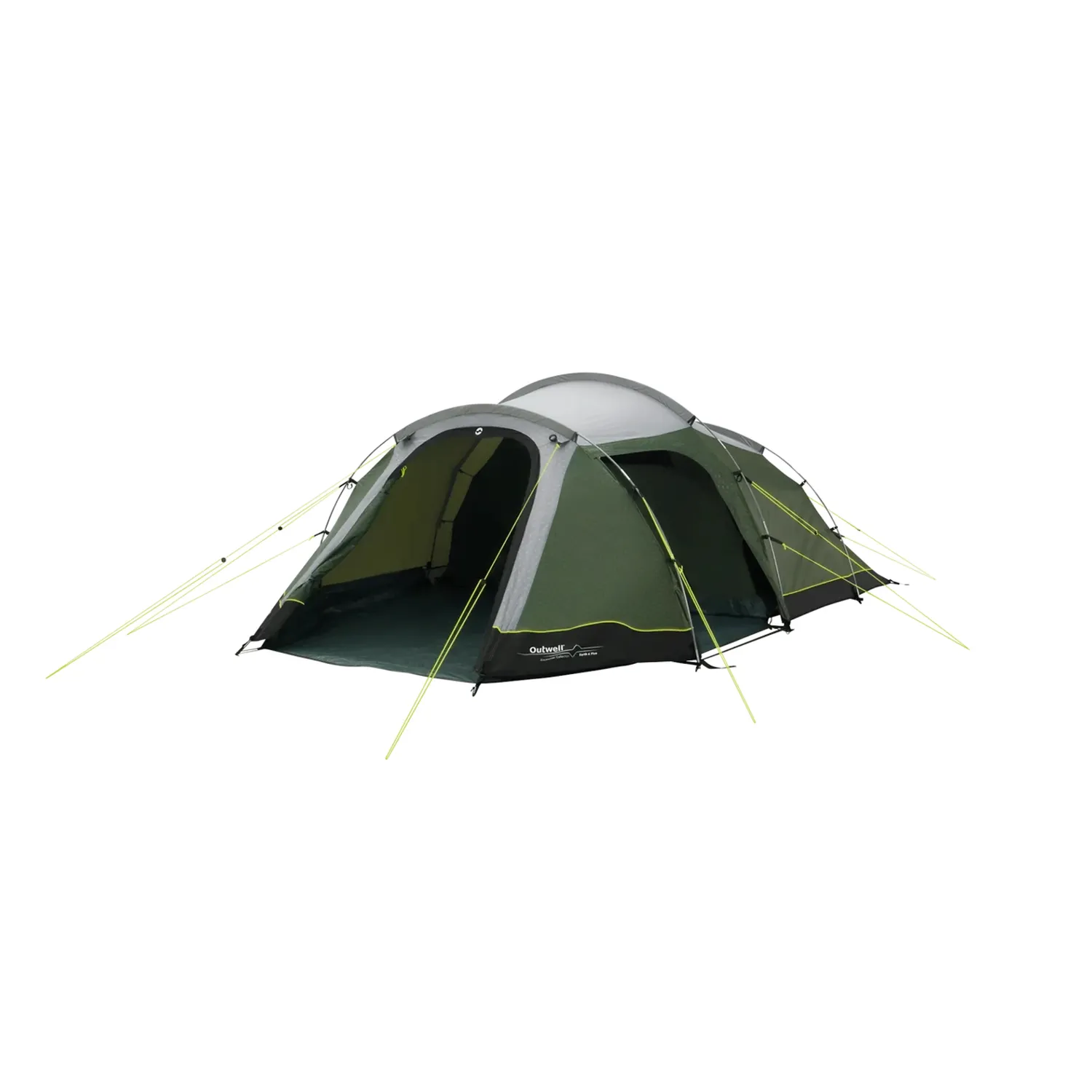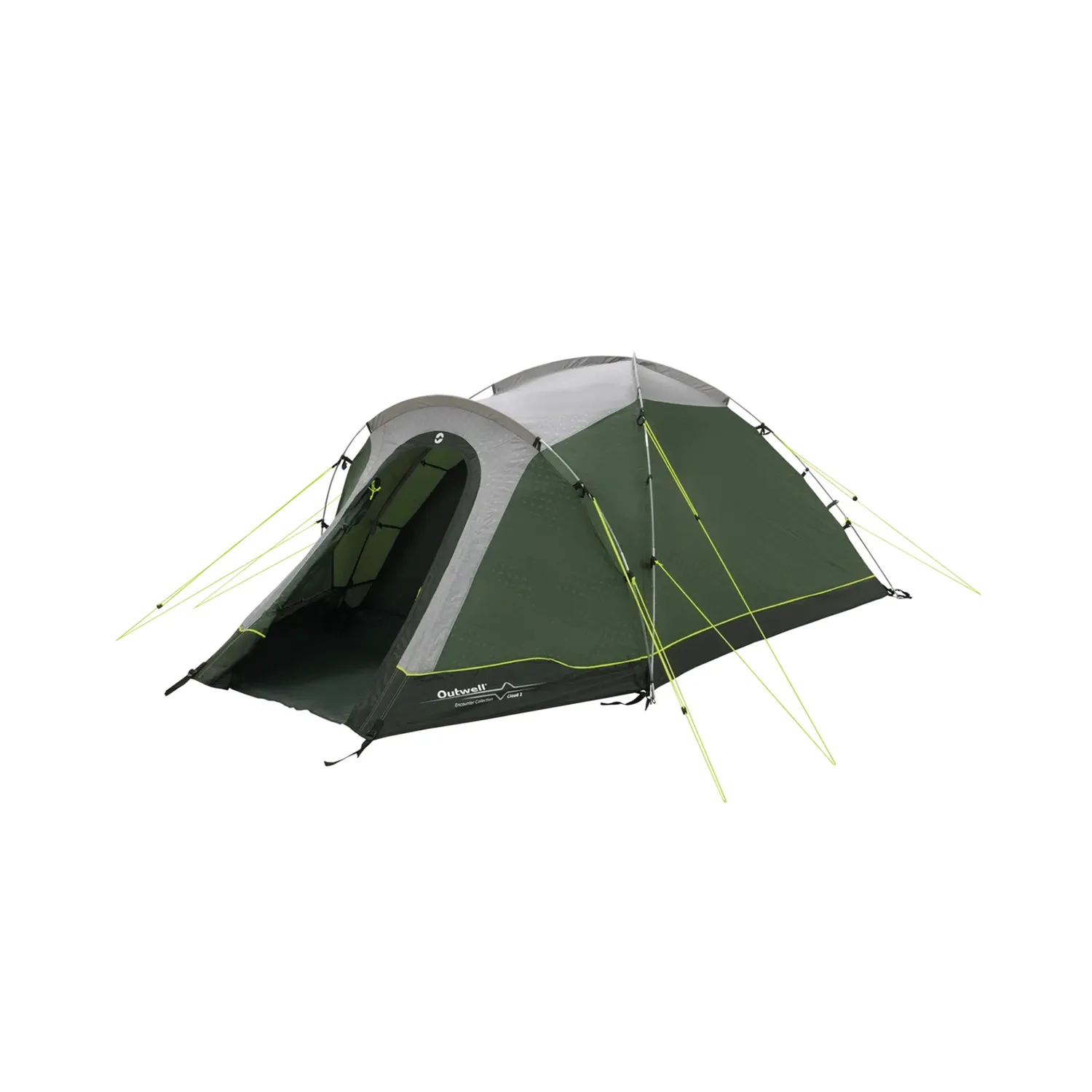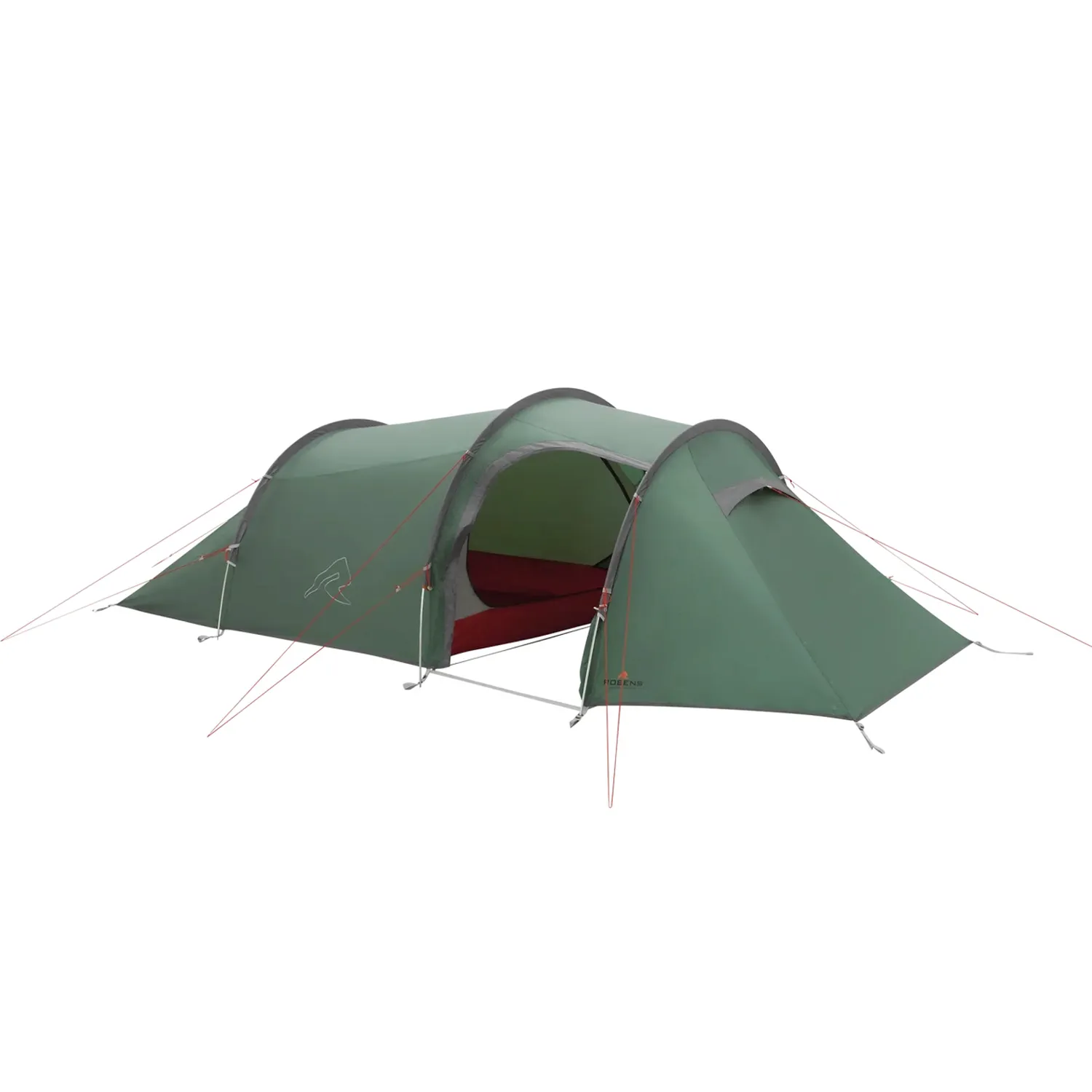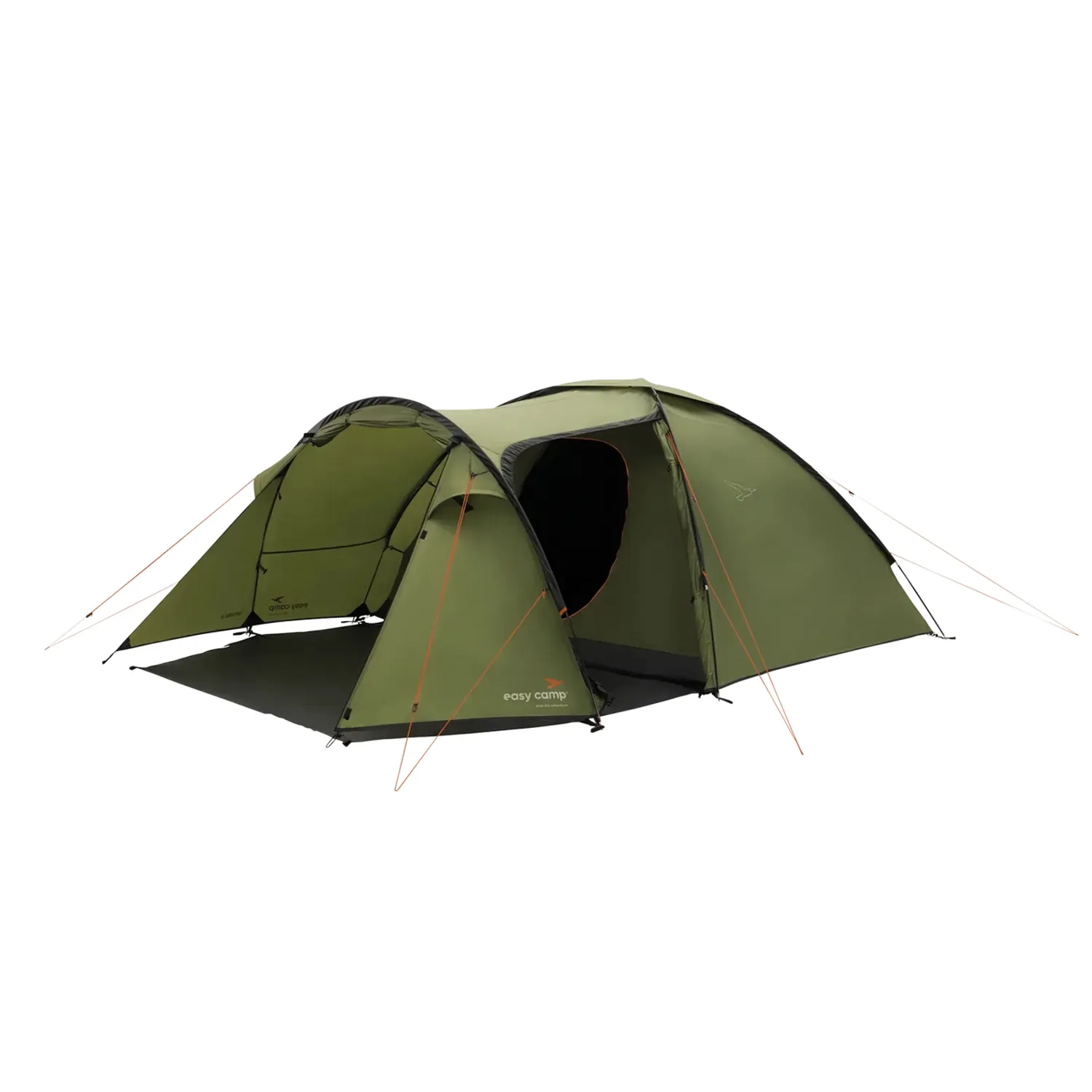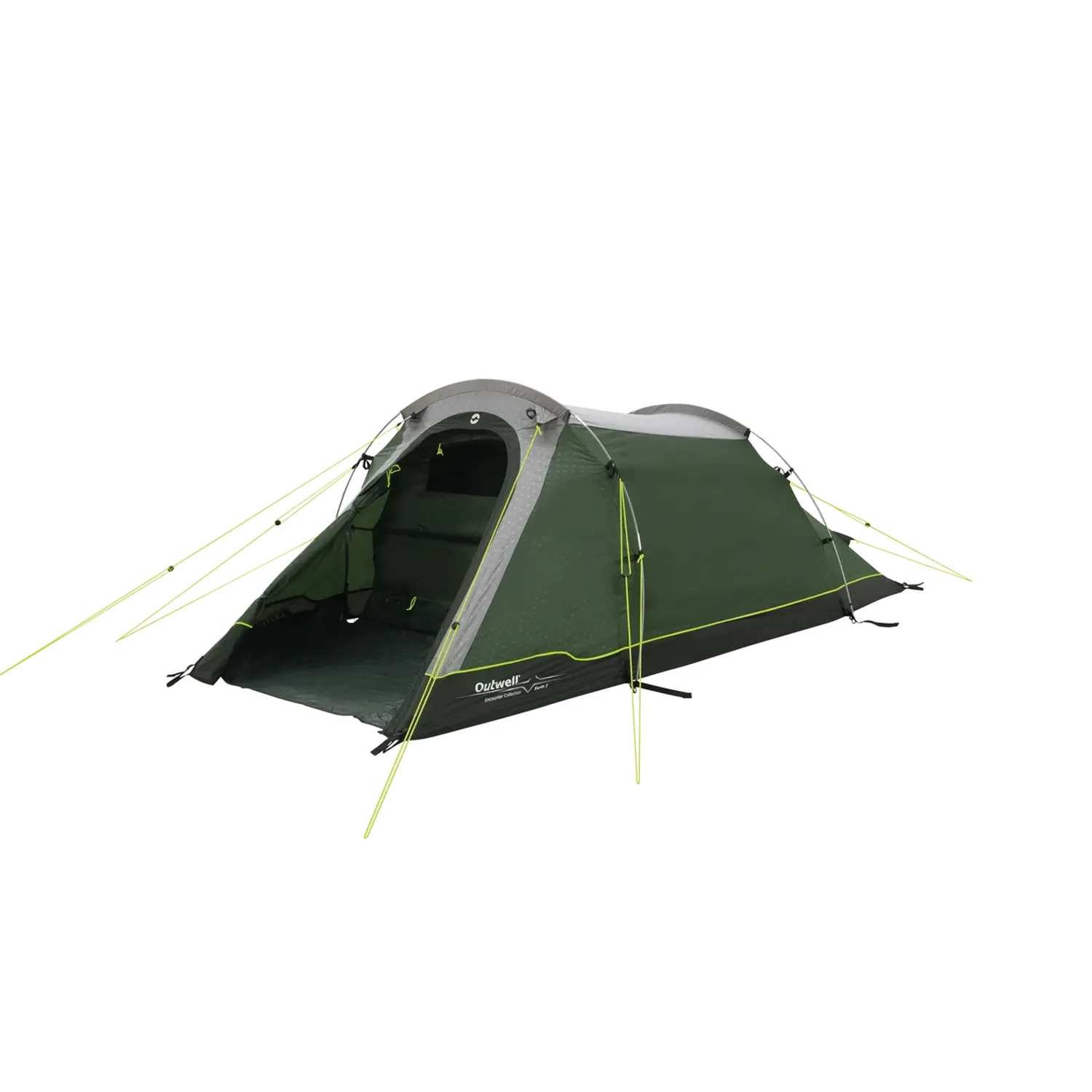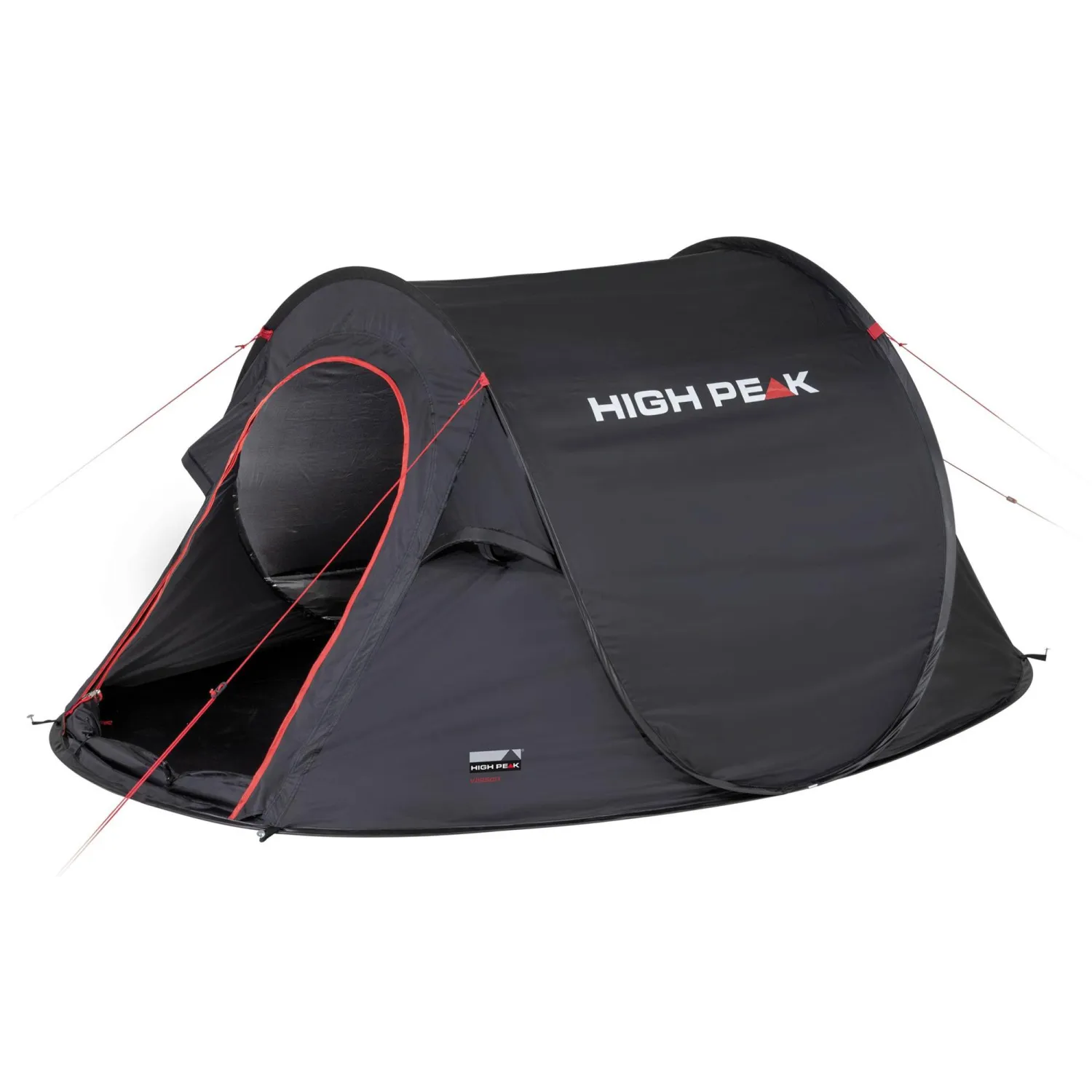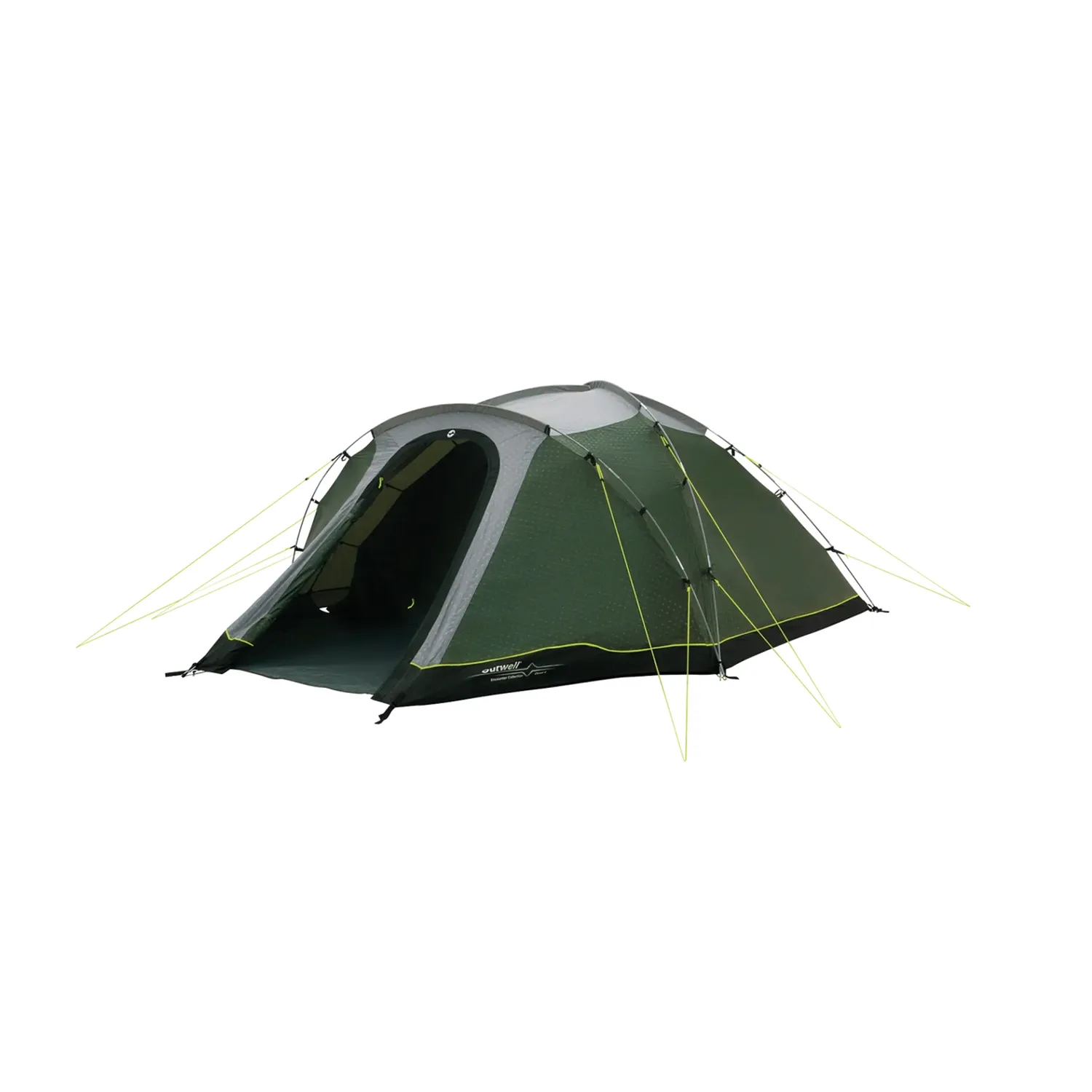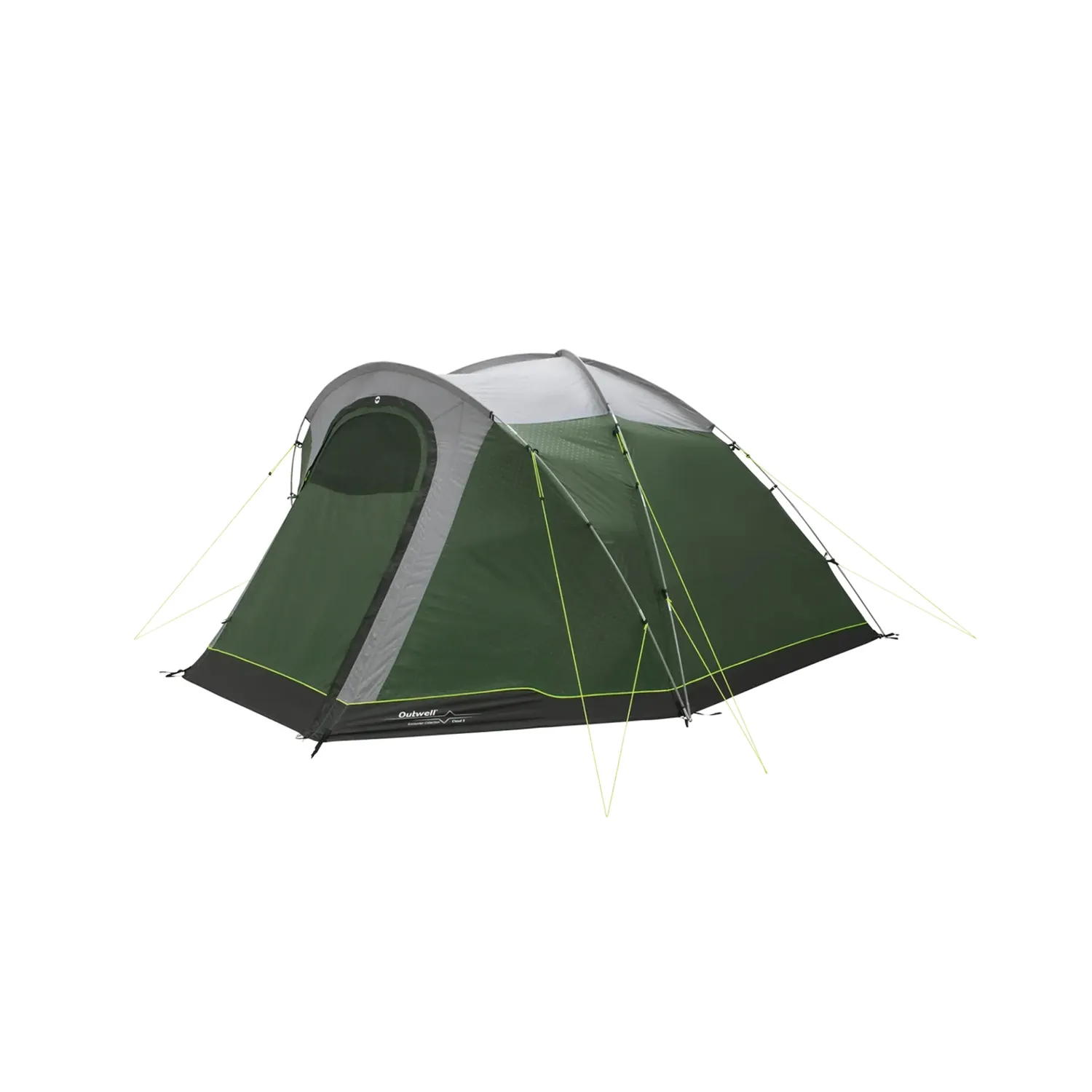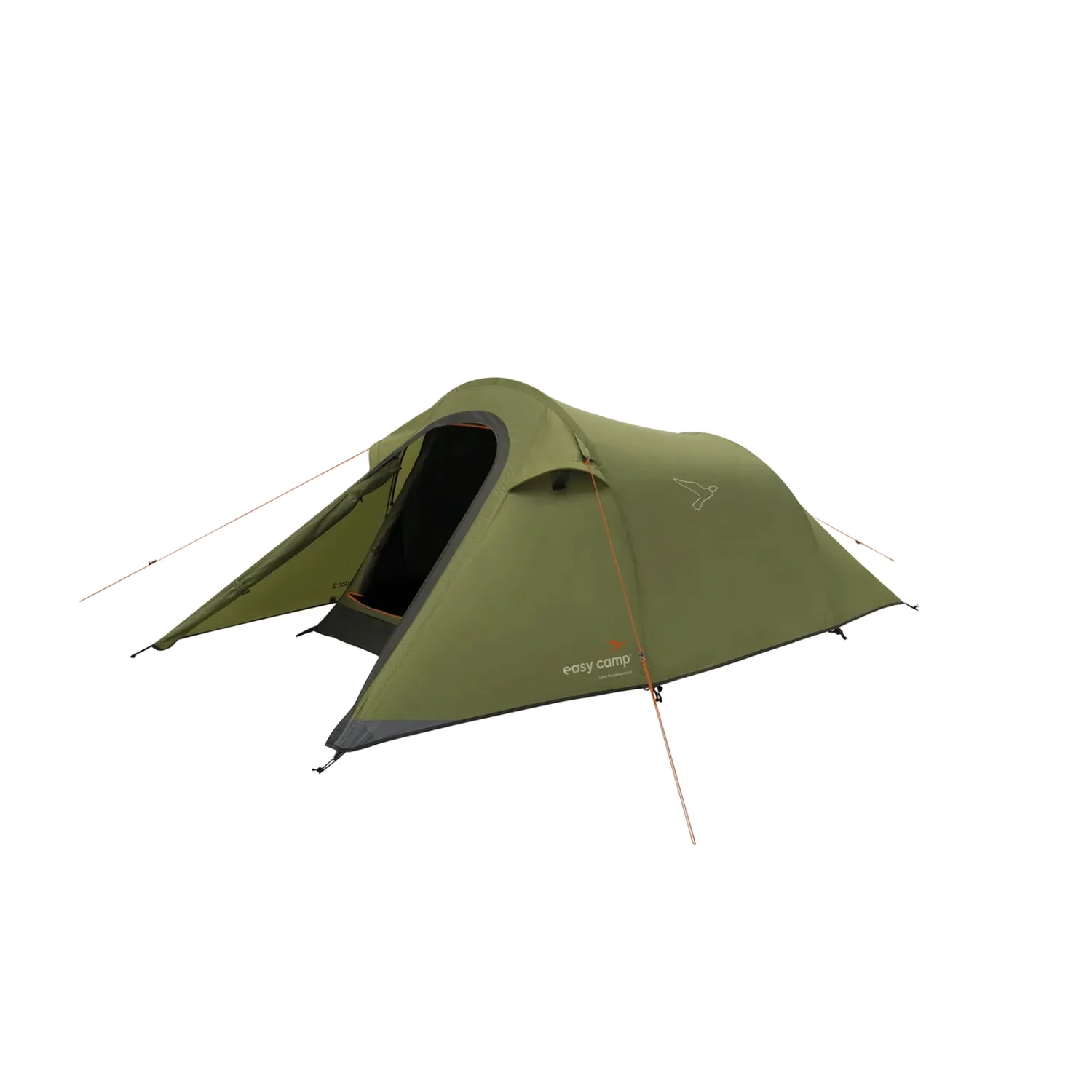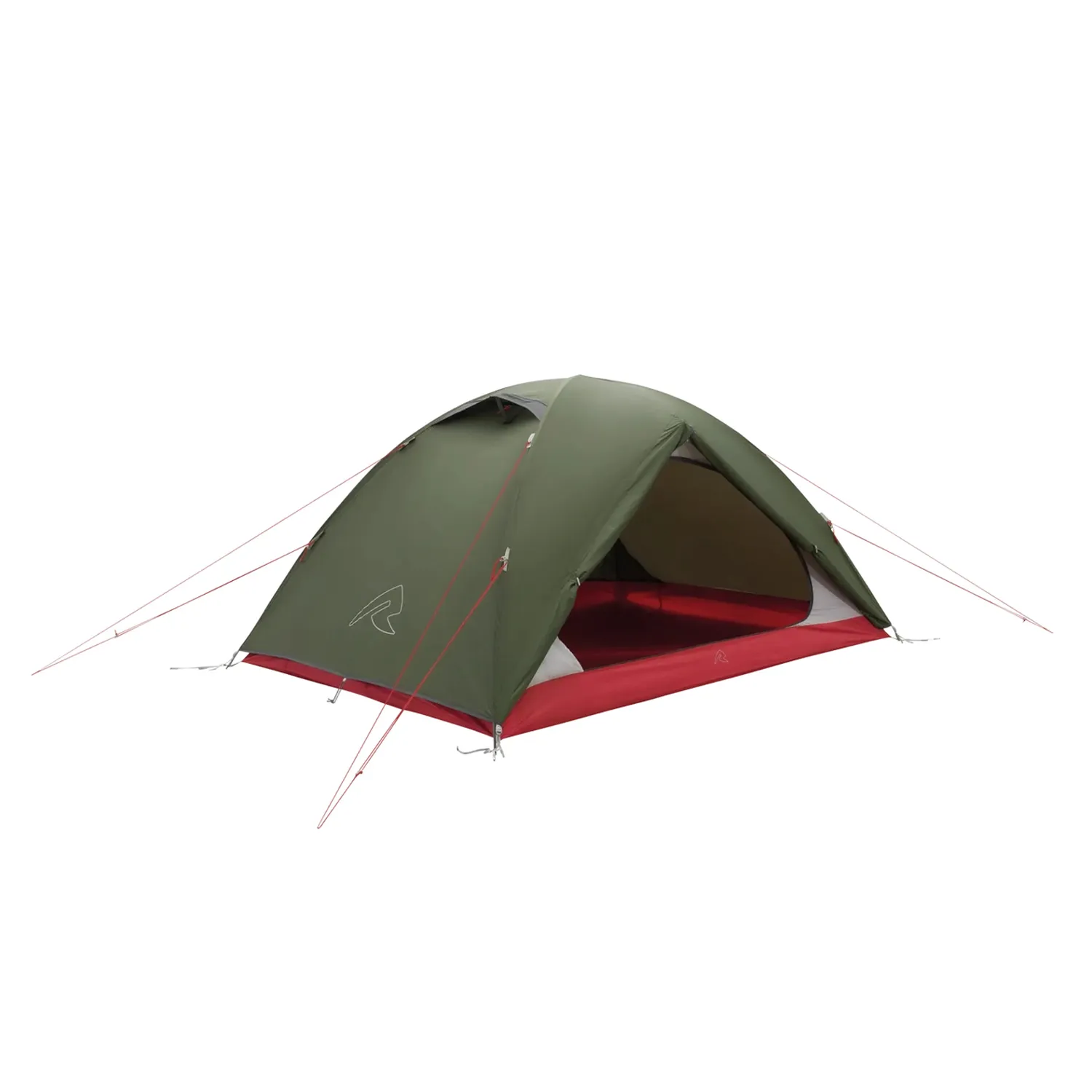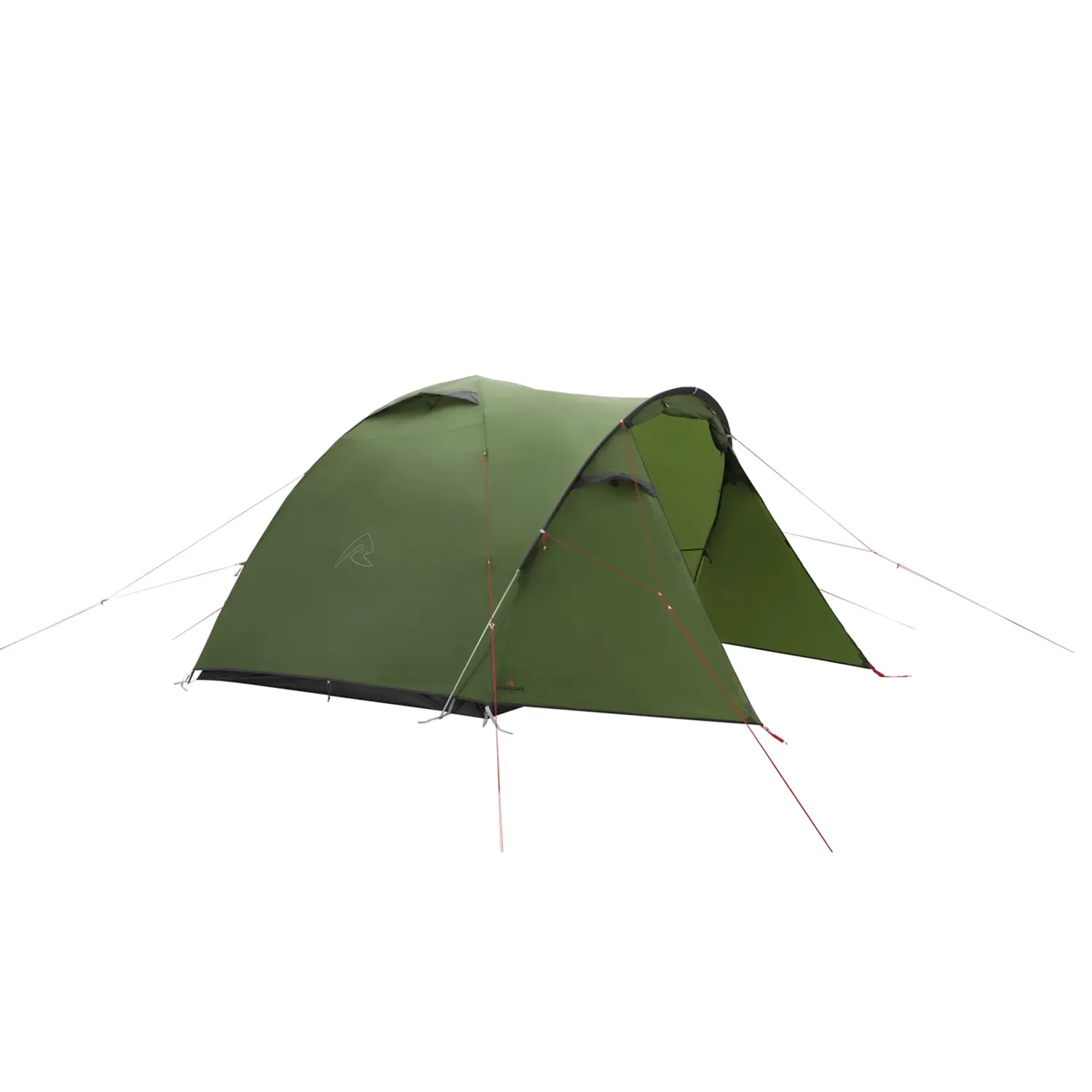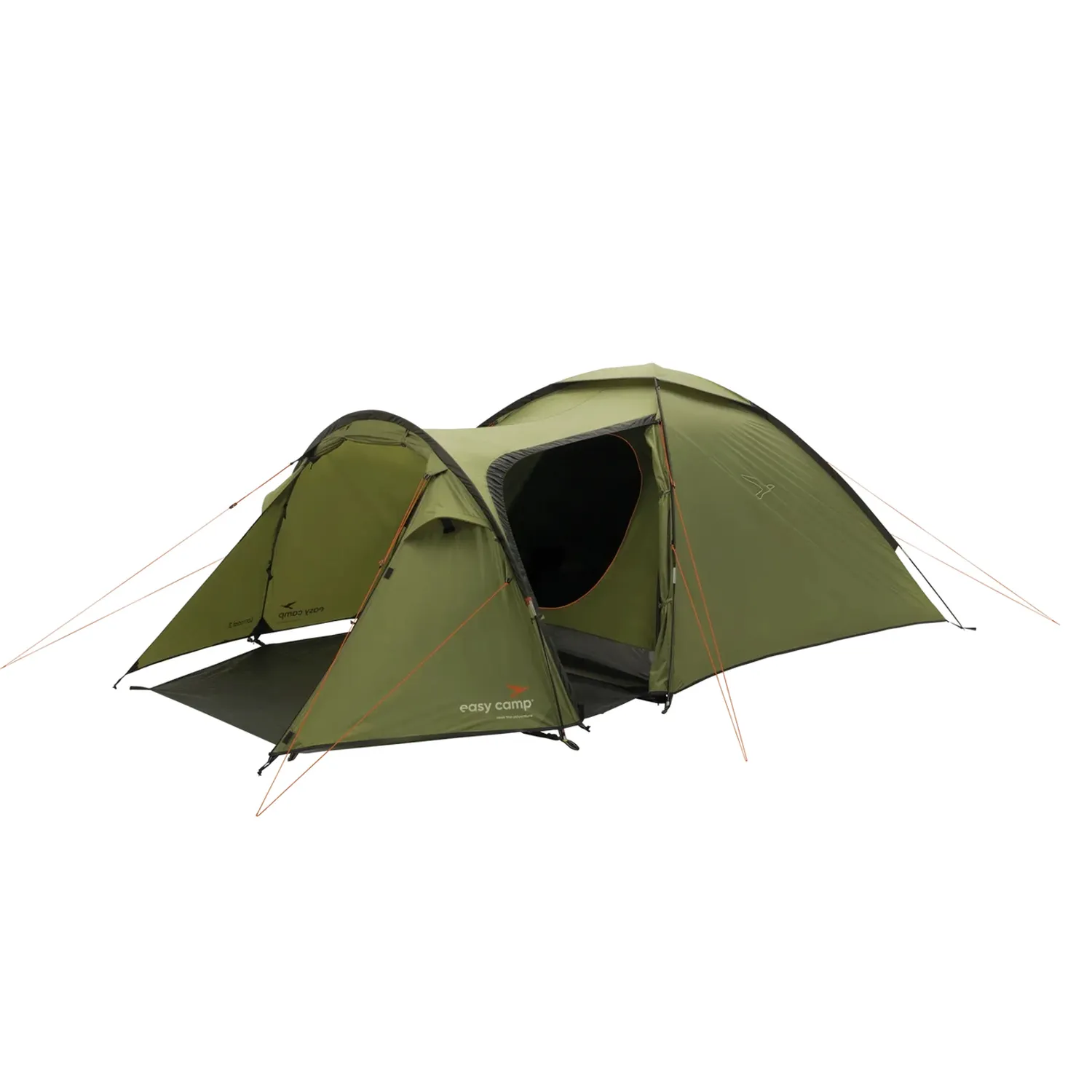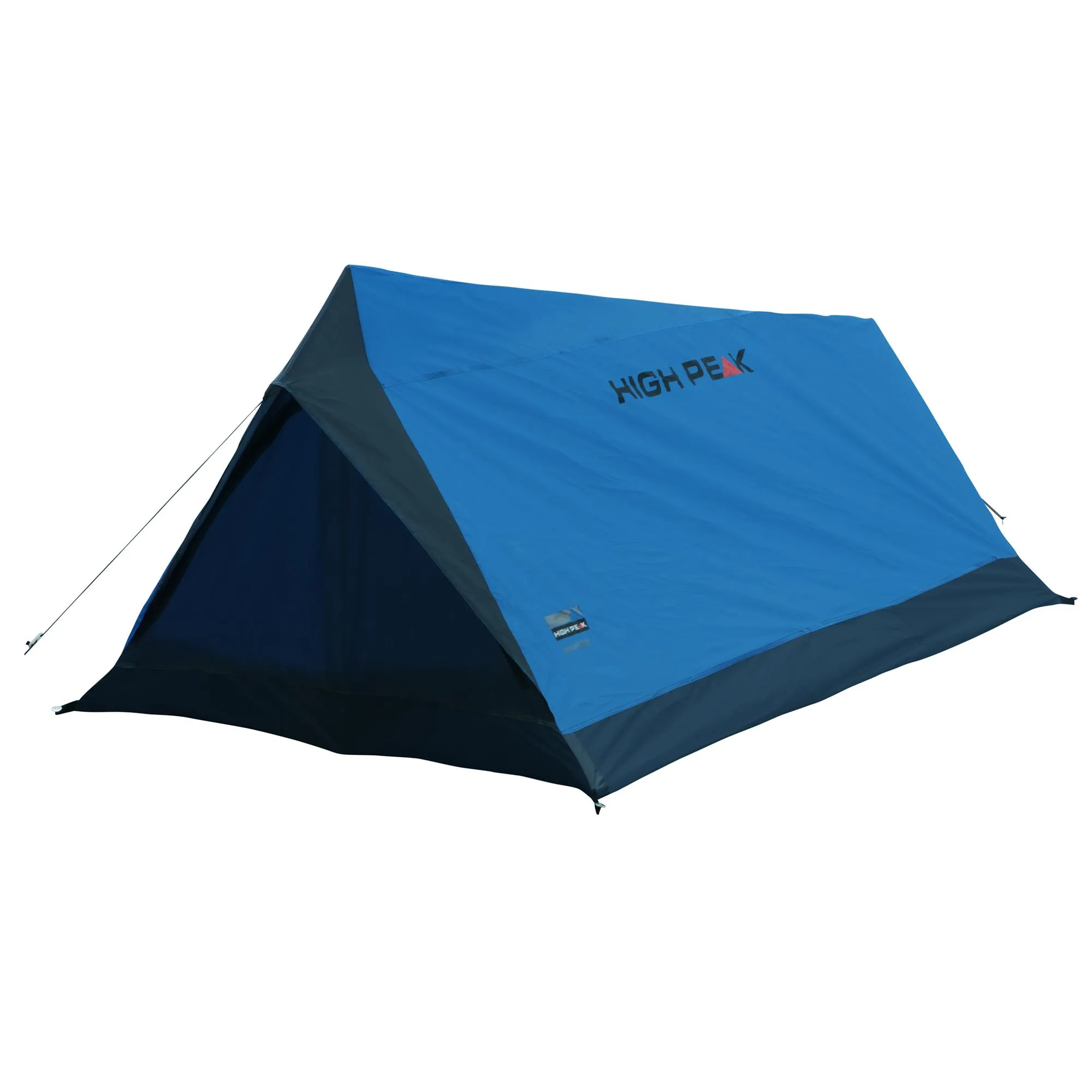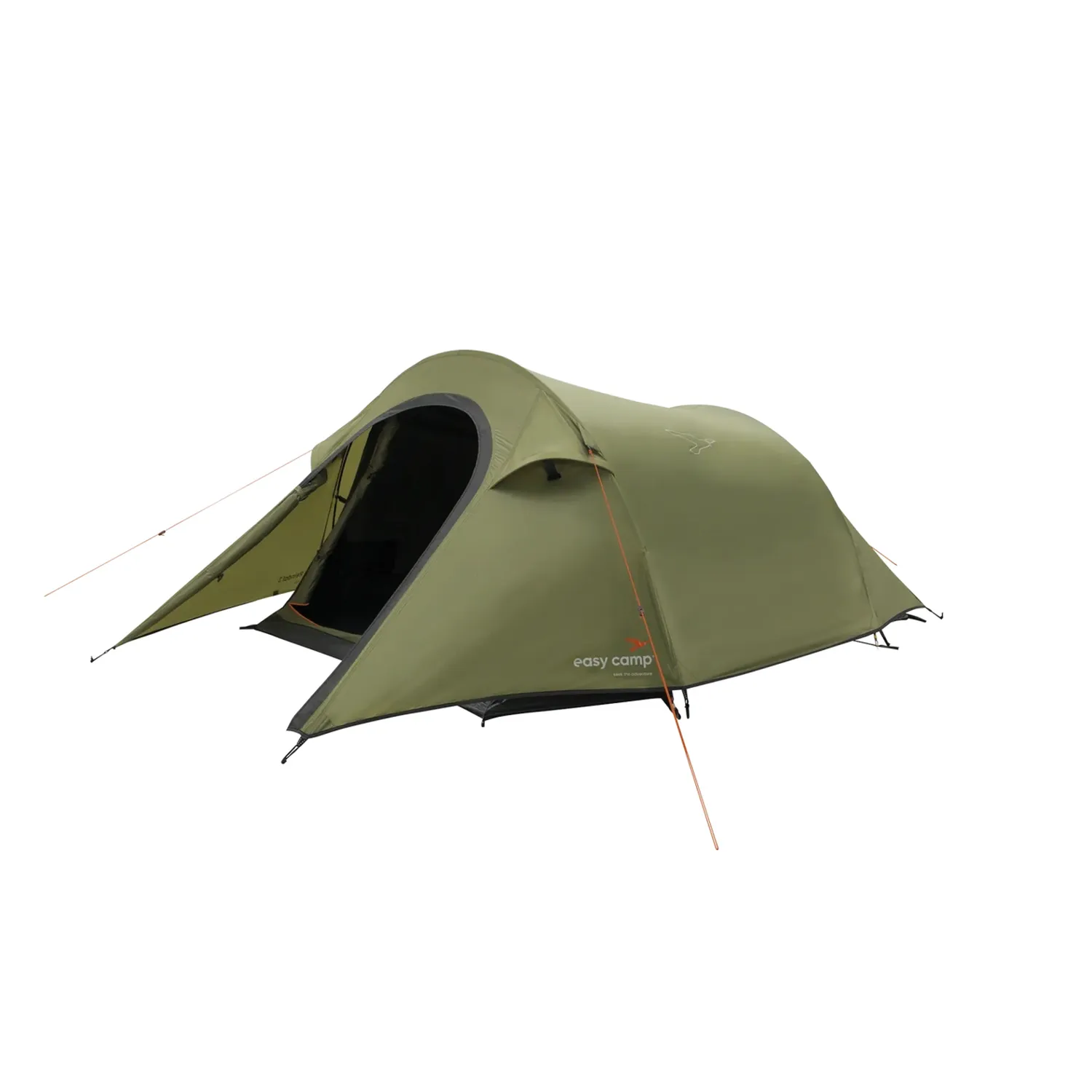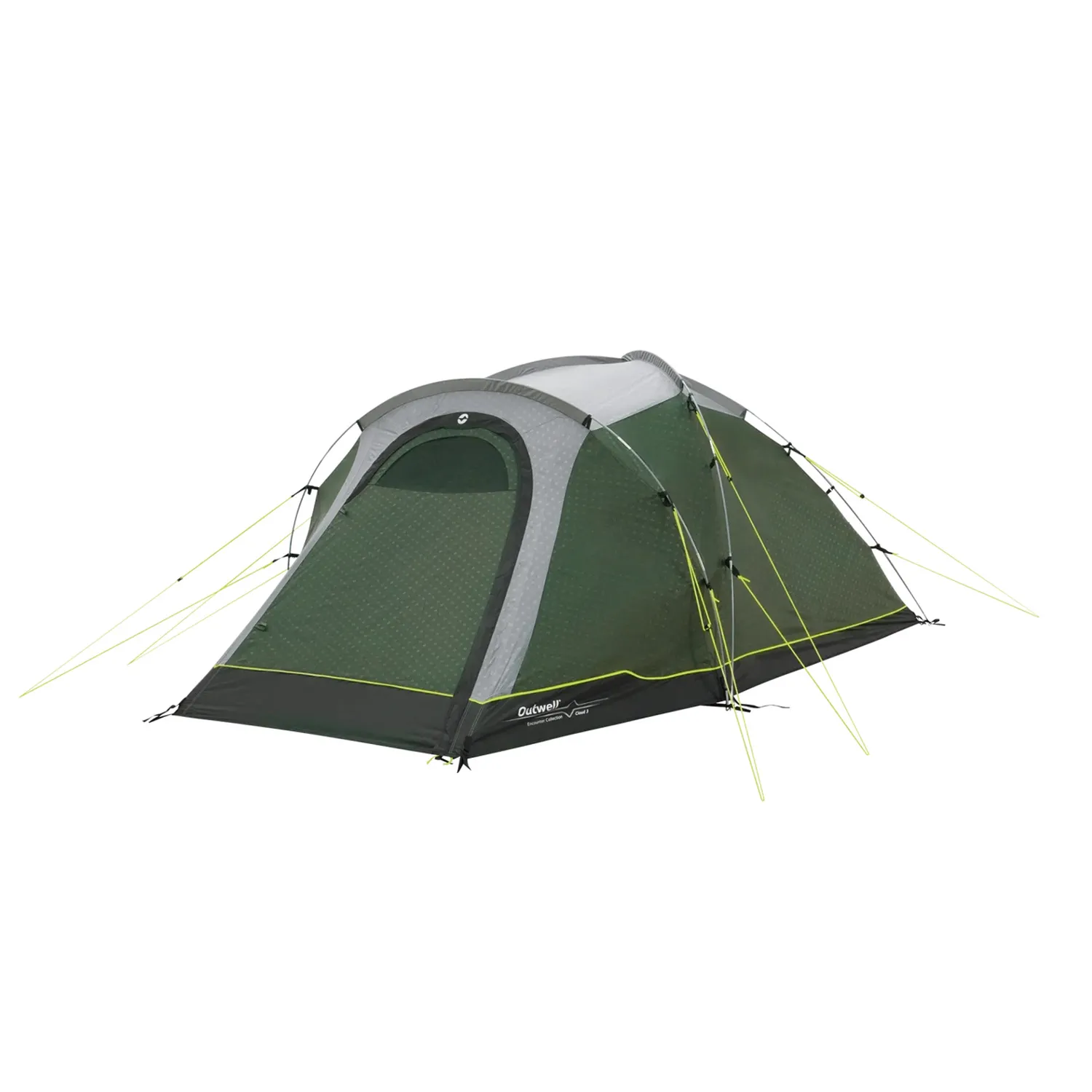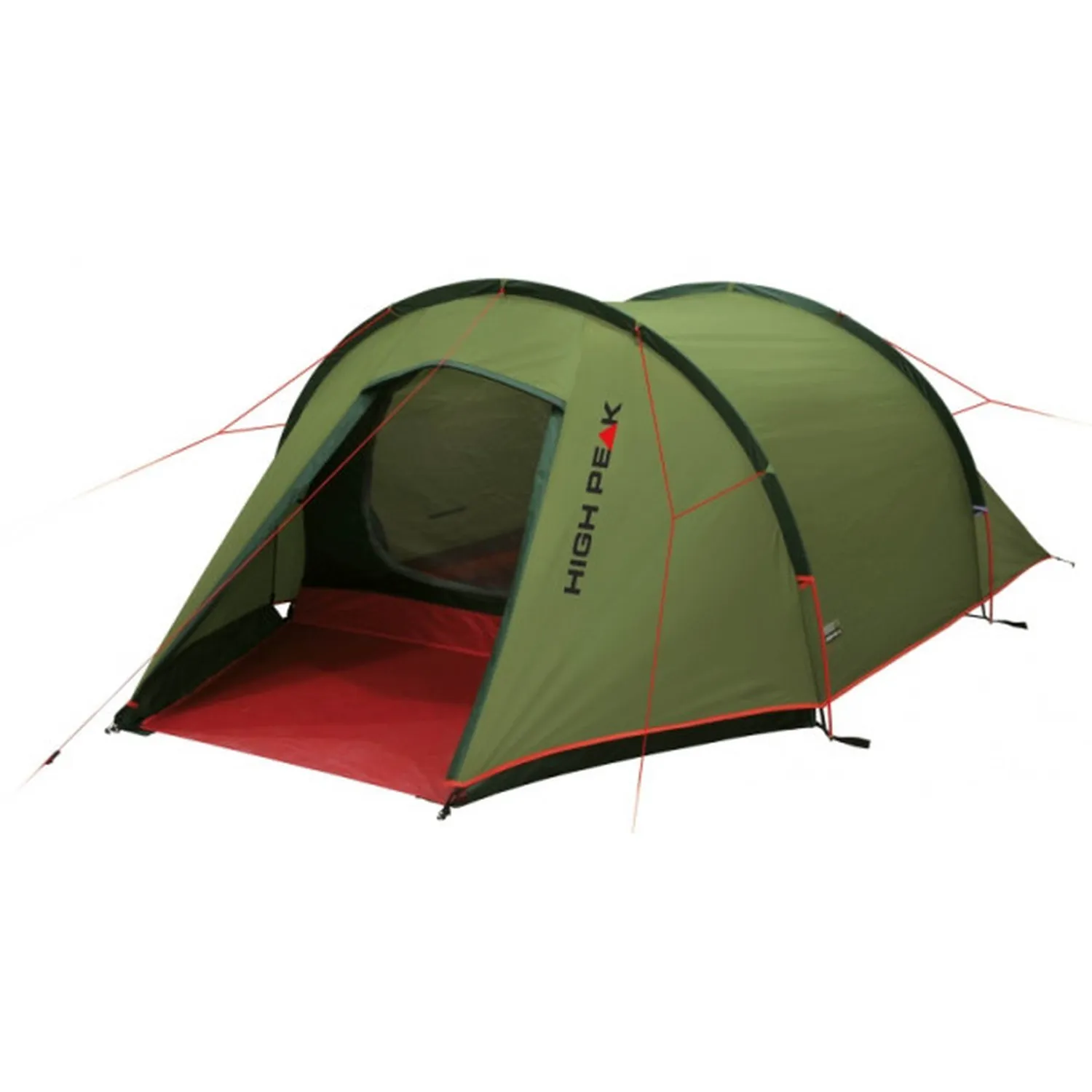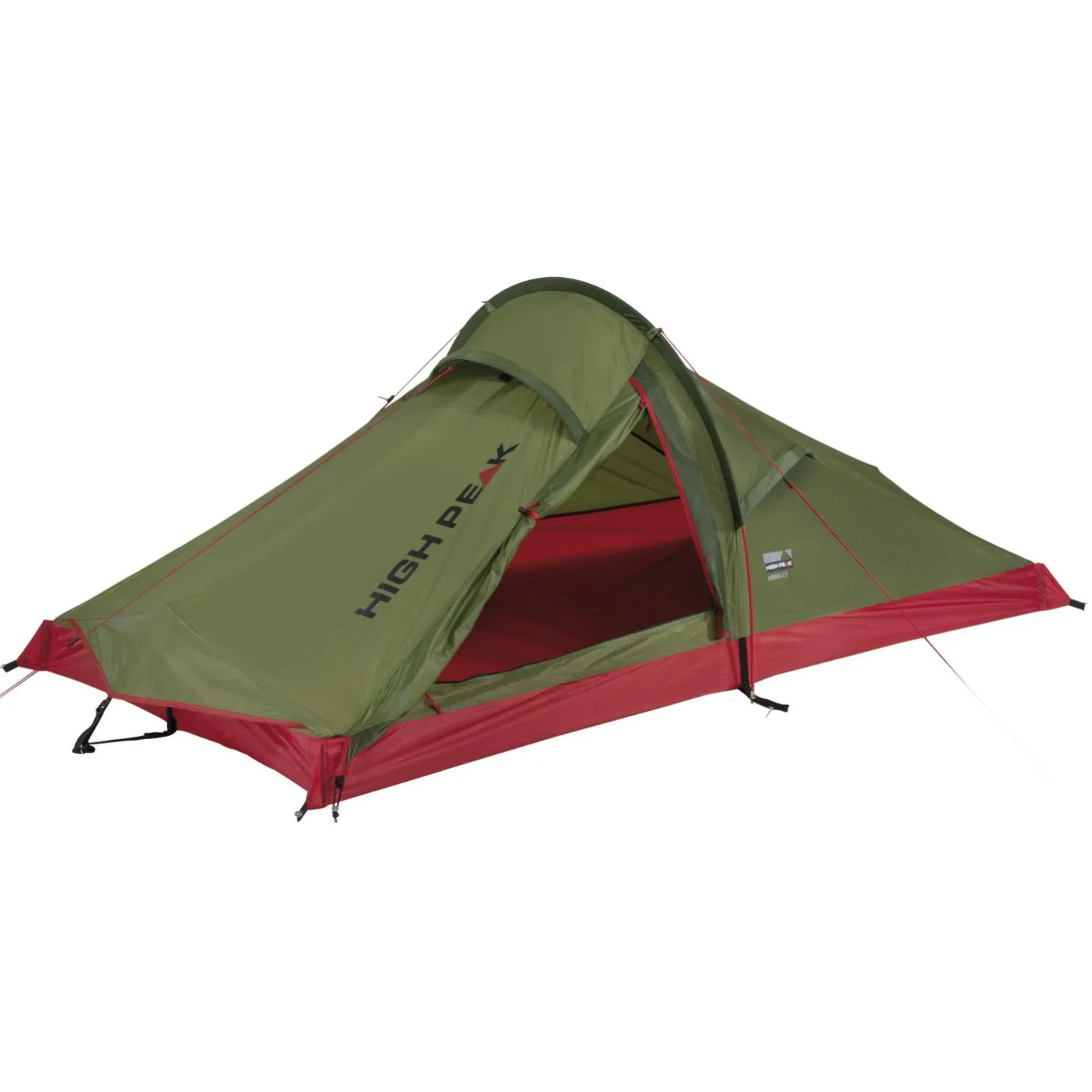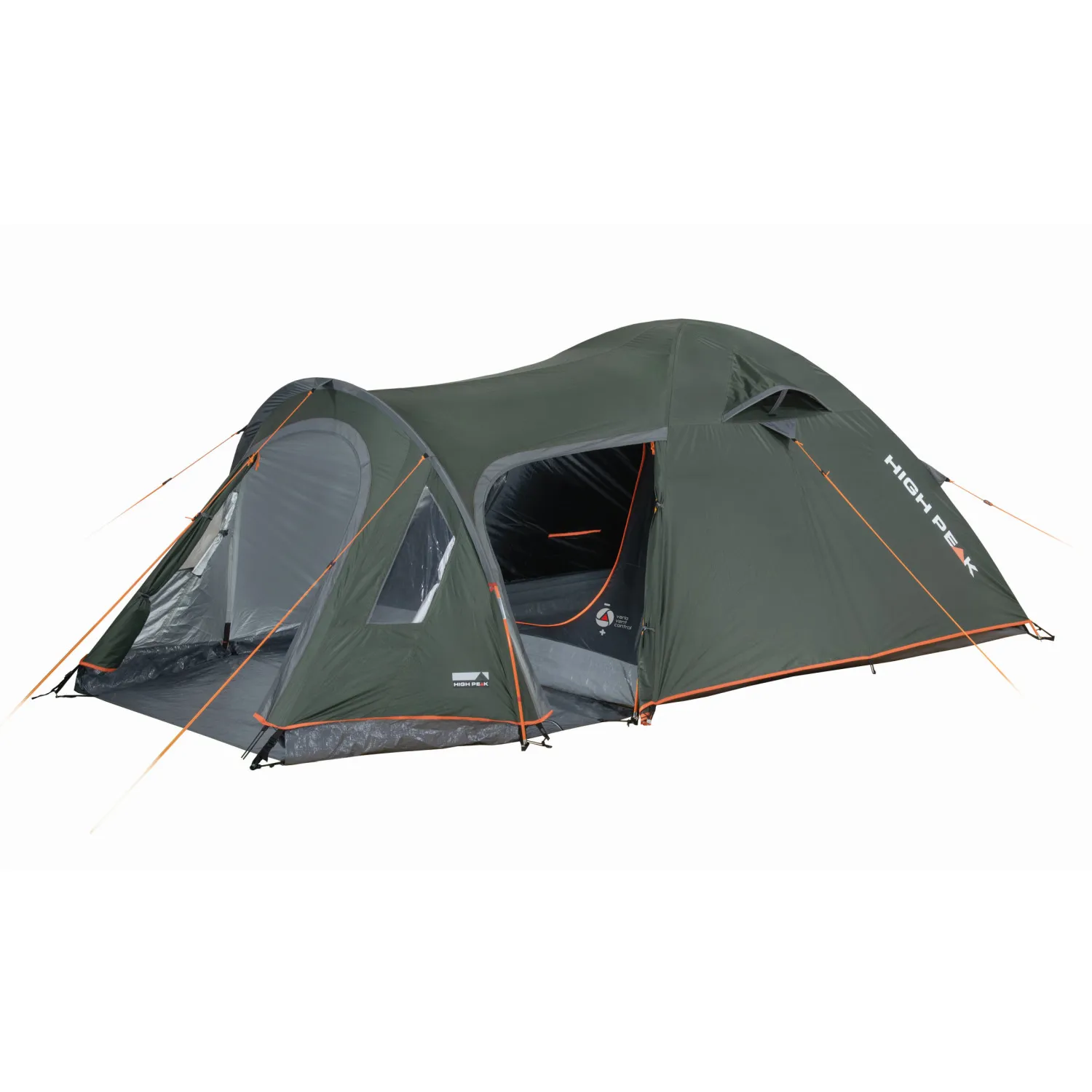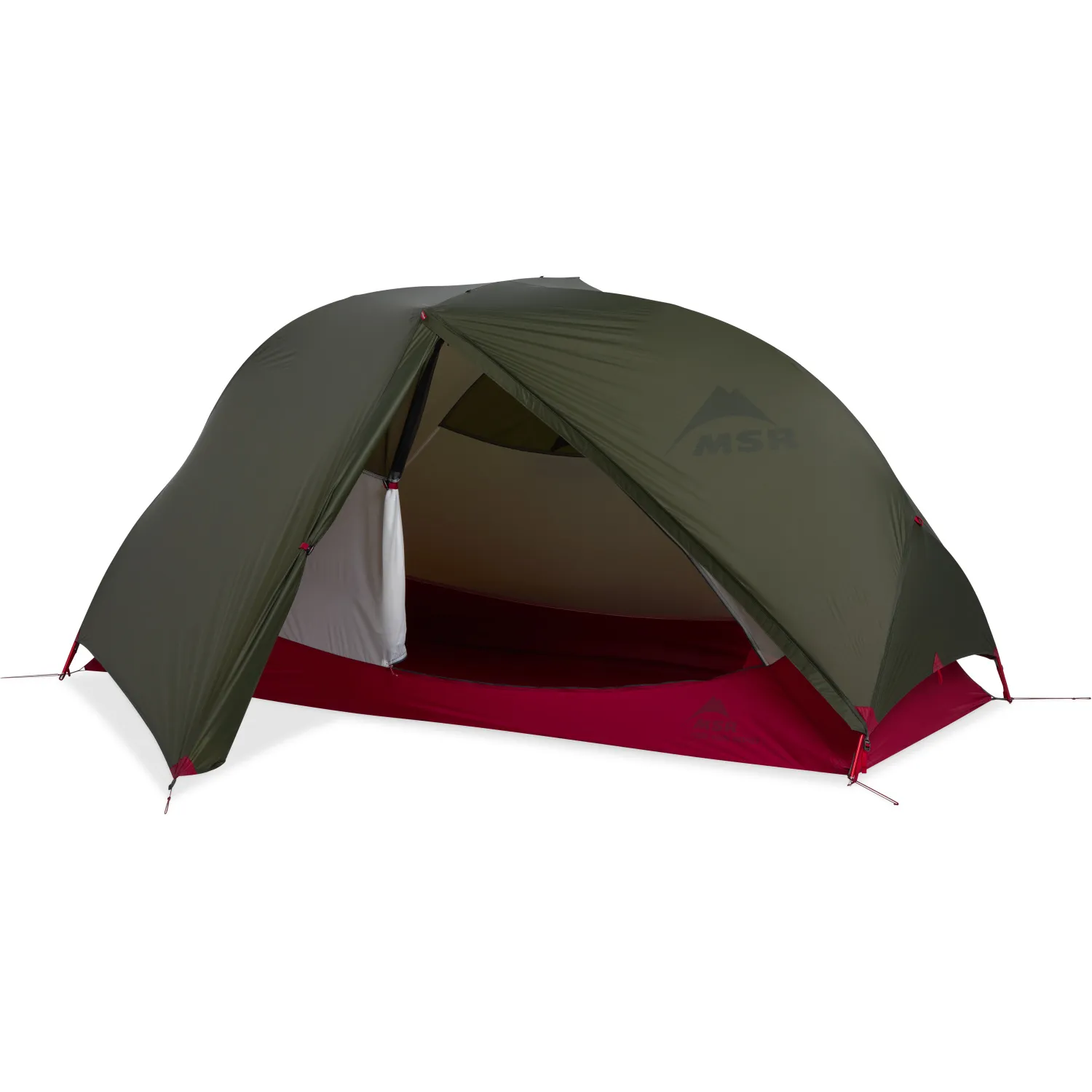Camping tent without standing height
Camping tents without standing height
The classic for solo adventurers, couples and families with children
Whether it's a two-week camping holiday, a festival or a cycling holiday - camping tents are compact, versatile and flexible. Depending on the features, you can either enjoy maximum comfort or benefit from minimal weight.
Buying a camping tent - a checklist for beginners
1. Cotton or synthetic fibre - which material is better?
The material determines the air in the tent, whether it stays dry inside, how much care you need to invest and how long you will have something from your tent.
Synthetic fibres are very weatherproof and dimensionally stable. They are extremely robust and generally windproof and UV-resistant. Unfortunately, tents made of synthetic fibres tend to get stuffy quickly - which is why your tent should definitely have ventilation options with this material. In terms of weight, they are superior to other materials and are also suitable for transport by bike or on foot. Simply wipe down with soapy water and a cloth. Rain does not affect synthetic fibres - they neither stretch nor become heavier. The material also dries quickly.
Cotton is particularly breathable and is suitable for particularly dry and hot regions. However, the material does not like rain. Once wet, the material dries very slowly and can even become mouldy if not cared for properly. Cotton also performs worse in comparison in terms of weight.
A material blend of synthetic fibre and cotton offers the best of both worlds. This means you can benefit from a pleasant climate in the tent as well as durable, easy-care and robust material.
2. Waterproof - how high should the water column be?
A look at the water column shows you how good the rain protection of your camping tent is. The higher the water column, the more (waterproof) the material or tent. In mm, this tells you how much water the tent can "withstand". A tent is considered waterproof from 1500 mm. If you are planning to camp in areas that are famous for rain, you should opt for tents with a water column of 3000 mm or more. Another tip to keep it nice and dry: Make sure that the inner and outer tents do not touch.
3. What size camping tent do I need?
Camping tents offer space for 2 to 5 people. This makes the tents particularly suitable for couples or families with children. The tent should be big enough so that everyone involved doesn't feel like they're in a sardine tin. Want to cook in the tent? Don't forget to factor in space for this and luggage when choosing the size of your tent. Of course, you can also use an awning as storage space.
4. How important is the tent weight?
Depending on what you plan to do on your camping holiday, the weight of the tent can play a decisive role. Are you travelling by bike? Or are you travelling by car? Or are you looking for a tent for your next trekking holiday? If you have to lift the weight of the tent yourself and also change locations frequently, you should make sure that your tent weighs no more than 2 kg. If, on the other hand, you are travelling by car, a higher weight means more space and therefore more comfort!
5. How is the camping tent pitched?
Nothing is more annoying than having to spend hours (hungry and tired) setting up a tent. In terms of pitching, camping tents can be roughly divided into three categories: Throw tent, inflatable tent and tent with poles.
The quickest tent to set up is the throw tent. All you have to do to set up the tent is unpack it so that it unfolds itself. Now secure it with a few pegs and the camping tent is up. Only the dismantling is a matter of practice.
You hardly need any muscle power to set up inflatable tents. They are set up very quickly - thanks to air ducts and a pump.
Last but not least, the classic: the camping tent with poles. This tent takes a little longer to set up, but scores highly in terms of stability.
6. Is there enough ventilation?
Even with just two people, the air in the tent can quickly run out. This is when ventilation options come to the rescue. So when looking for a tent, check whether the tent of your choice is equipped with side windows, ventilation slits or similar.
7. Does the tent offer additional comfort aspects?
You now know the basic points you should consider when buying a camping tent. But a little more comfort doesn't hurt, does it? We have a few suggestions for you that will transform a simple camping holiday into luxurious glamping (or at least almost):
- Separate sleeping cabins clearly separate the "living area" from the sleeping area and offer practical retreats when you want to be on your own.
- Inner tents protect against moisture. That alone makes them worthwhile. Set up without the outer tent, you can also sleep under a starry sky, protected from midges.
- Awnings / vestibules not only provide shade, keep you dry in the tent and keep moisture at bay, but also offer storage options for your luggage and space for a cooking station.
- Some tents are equipped with blackout material or offer options (curtains) that make the tent darker and give you a good night's sleep.
Dome or tunnel tent: an overview of the camping tent types
Camping tents can be roughly divided into the categories of dome and tunnel tents. Find out what advantages the two types of tent have to offer below:
- As their name suggests,dome tents have the shape of a dome. This is created by the poles that cross in the centre of the tent. Not complicated in design, this tent can be erected quickly. In principle, dome tents are self-supporting, so you don't even need to guy them out. With multiple entrances, you remain flexible and protected from direction-changing rain and wind. This aspect also offers you advantages in terms of ventilation. The peculiar shape also makes the tent particularly wind-resistant - and with a compact pack size that doesn't take up much space. Also nice: On particularly mild nights, you can pitch just the inner tent to sleep "directly" under the stars. The disadvantage: dome tents offer less space than tunnel tents.
- Tunnel tents are particularly spacious and quick to set up. They not only offer excellent storage options, but also enough space for several people.
With their narrow, tube-like shape, they do not quite match the wind stability of dome tents. However, they can still withstand smaller storms - provided you have braced them well.
Cleaning the camping tent
- Set up the tent.
- Brush off coarse dirt first on the inside, then on the outside.
- Now vacuum clean your tent with a hoover.
- Spray off any remaining dirt on the outside with the water hose.
- Finally, wipe the inside and then the outside of the tent with soapy water and a cloth.
- Finally, wipe over the tent floor.
- Allow the tent to dry thoroughly in the fresh air.
Tip: Do not clean your tent with aggressive cleaners or alcohol. These attack the material and can damage it permanently. You should also keep your tent out of the washing machine.
Camping with a tent - what you should take with you
Camping is a lot of fun - but it also usually requires a lot of things that you should take with you. To make sure you don't forget anything when packing, we've put together the following list of camping essentials for you to tick off:
- Tent & accessories
- Tarpaulin as rain protection for the tent from below
- ID, driving licence, credit card, cash, etc.
- Mobile phone & charger
- Light (additionally: torch, tea lights, matches)
- Camping cooker & barbecue if necessary
- Durable food (tinned food, UHT milk, pasta, rice, coffee, tea, spices)
- Crockery & cutlery (board, pan, pot, plate, spatula, wooden spoon, sharp knife, can opener, etc.)
- Dishcloth, washing-up liquid, washing-up bowl & towel
- Mosquito net
- Camping chair and table - alternatively picnic blanket
- Camping mat
- Sleeping bag
- Blankets
- Shower kit & towel
- Clothing
- Optional: swimming gear
- Line for drying
- Leisure activities (books, music, etc.)
- Hammock
- First-aid kit
- Sun cream & insect repellent

























